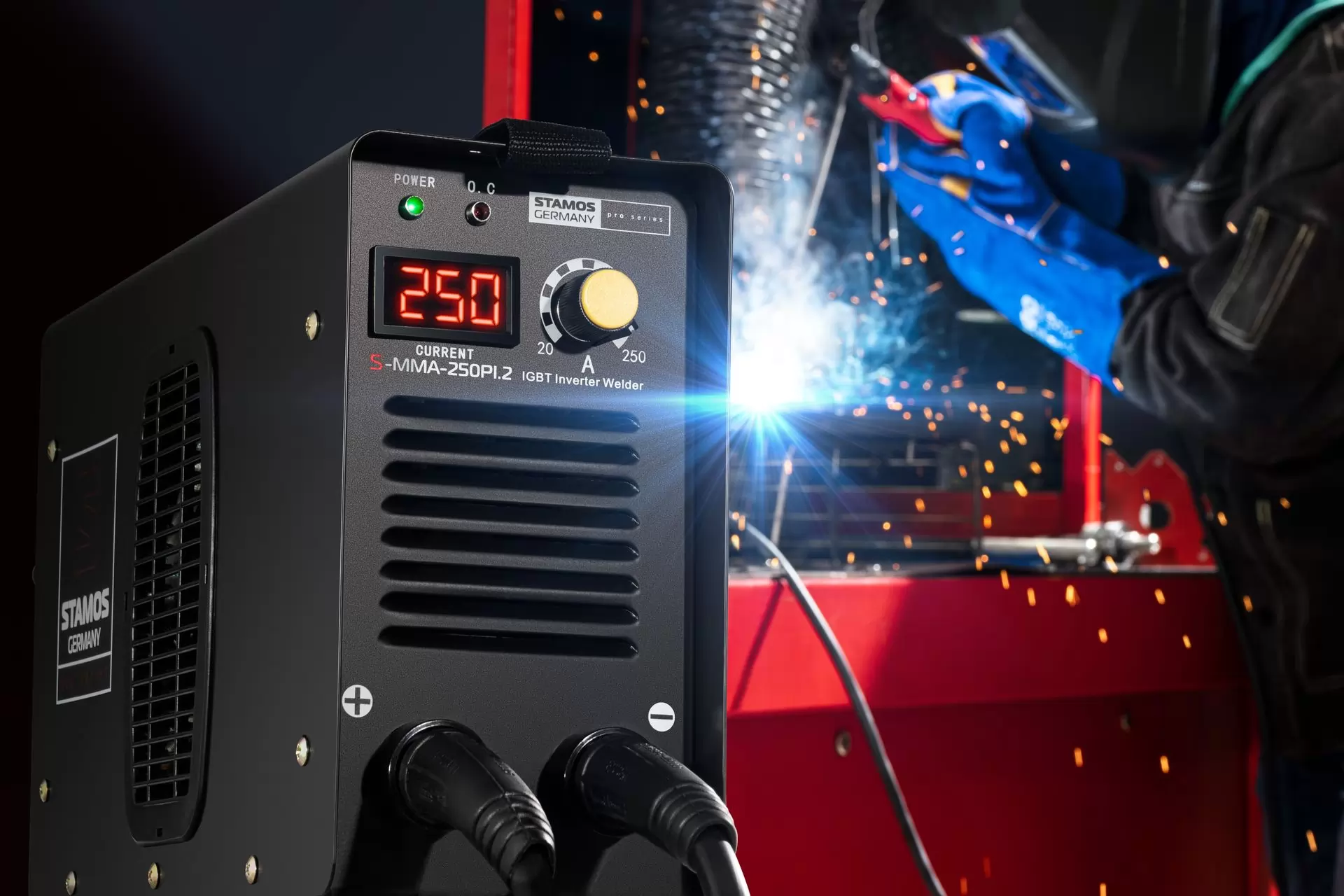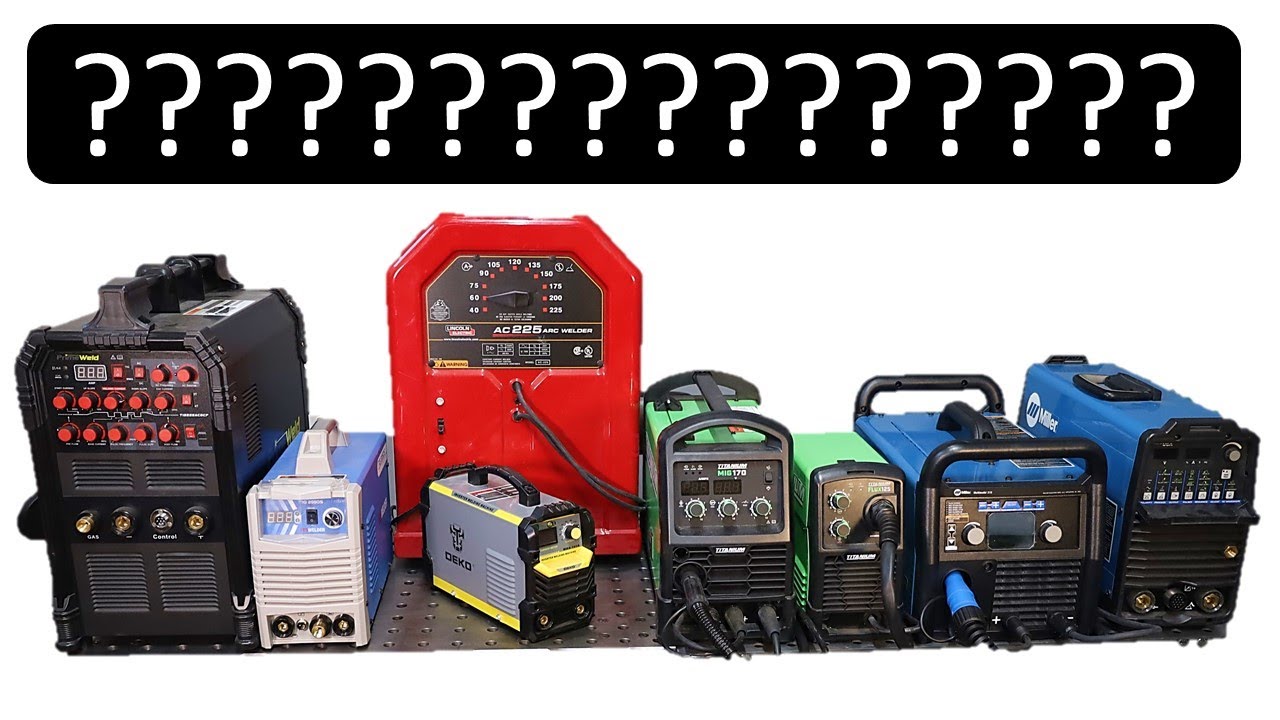Interesting fact. Silicon Valley in the United States came about as a result of the obnoxious nature of one of the inventors of the transistor, William Shockley. Using his name, which had become famous, he massively recruited young capable scientists to work with him. After working with W. Shockley for a little time, the young scientists fled. Most of them chose to stay nearby under the warm California sun and set up their own firms in the process.
What to look for when choosing a welding inverter.
Almost all inverter-type welding machines have built-in surge protection. The optimal level of protection is 20-25%. Those. during voltage surges in the range from 170V to 270V, your device will be protected. As a rule, expensive models for industrial use have this protection. For devices for domestic use, this figure is usually 10-15%.
Ventilation. Dust is the main enemy of the welding inverter. Basically, the dust is sucked in by the cooling fan, without which it is impossible to do without. Naturally, manufacturers come up with various ventilation methods to reduce dust ingress to the most sensitive components. One of these methods is tunnel ventilation, when the radiator is located along the entire body, and the main components are inside the radiator. But this is for very dirty industries. In most cases, paying for super-ventilation is not worth it. It is best to simply remove the housing, then remove the dust with a blow and a soft brush. This is the most reliable way. Anyone who has their own computer (they have a similar problem) – this procedure should be familiar.
Take an interest at the service about the availability of printed circuit boards (the most frequent and expensive breakdown) for the device you are interested in. If the boards are only on order, then this is a good sign: a spare part is rarely requested. If the service, when asked about spare parts, finds it difficult to say anything intelligible: when it can be, the price, where it is imported from, etc., it is better to refrain from buying.
Temperature range of operation of the inverter. With a temperature that is above zero, everything is more or less simple: the higher the ambient temperature, the faster the protection of the device will work. In addition, the maximum allowable temperature of + 400C is a rather rare phenomenon in our latitudes. But work at low temperatures is a slippery topic. The internals of the inverter are various microcontrollers, transistors, capacitors, thyristors, etc. Each element has its own operating temperature range, of course, the wider the range, the more expensive the spare part. But at what temperatures everything will work as an assembly – this can and should be said by the manufacturer himself. Unfortunately, such information is often difficult to find. Either it does not exist at all, or the manufacturer makes a reference to compliance with certain standards. In Europe, this is the EN 60974-1 “Arc welding equipment. Part 1: Welding power sources” standard, or the similar Russian GOST R IEC 60974-1-2004. These standards assume operating temperatures for manual arc welding from -400C to +400C. However, if the manufacturer in the passport refers to the specified standard, then it is not a fact that your inverter will start at minus 150C and below. It is advisable to look into the catalog and the manufacturer’s website. In Europe, the catalog is considered a very significant document (remember the heavy fines for dishonest advertising).
In principle, it is widely known that electronics do not “like” temperatures below O0C. At the inverter at extremely low temperatures, the “overload” light usually lights up and the device does not start. It is much worse if the device still works and heats up, as a result of which condensation forms inside, which can be dangerous for some components. If the temperature range of operation is not clearly indicated in the passport of your device, it is better to refrain from welding in frost.
When buying, do not be afraid of the term “household”.
The concepts of household, professional and industrial tools are not yet
terms legally and technically unified (and this is hardly possible). At the same time, when classifying their products, brand manufacturers adhere to approximately the following rules: the term “household” usually means continuous operation of equipment (tools) for 15-30 minutes with a further break of up to about one hour; professional tool involves operation with an 8-hour cycle, and industrial (industrial) can be operated in 3 shifts with small technological breaks. Other technical characteristics of household and professional tools are almost the same. That is, you will be able to weld the seam with the same quality with both household and industrial devices. But the length of the seam per unit time of operation of a household inverter will be less.
At the same time, it is quite logical that household tools of high power and (or) for any special tasks are not produced, only professional ones.
Some dealers are trying to focus the buyer’s attention on the standard features of the inverter: Hot start (hot start), Anti-Sticking (anti-sticking when turned off, freezing effect) and Arc-Force (arc force – anti-sticking when welding). These functions are closely related to inverter technology. Moreover, the inverter, in particular, was invented for this. Therefore, the “bulging” of such pluses is purely advertising in nature (if not worse). Such advertising is reminiscent of the slogan “Our switches not only turn off, but also turn on!”. Inverter technology has a number of other possibilities that are not always used. For example, the ability to configure for charging the battery: unfortunately, not all manufacturers provide, although technically it is not difficult and not expensive, but for the countries of the former CIS it would be very relevant.
All data on the performance of welding machines are based on 220-230V in the supply network. And even if your device is designed to operate in the 170-270V range, its performance at 170V will be significantly lower than at 220V. Those. some power reserve is very useful. With the current state of the electric power industry, in order to weld with a 3mm electrode without problems, you need to take a device with the ability to weld up to 4mm.
Manufacturers.
Not always a high price corresponds to a good manufacturer. Since a working welder can be assembled practically on the knee, the price of the welding machine is very dependent on the serial production. Usually, the larger the manufacturers, the more interesting price it can offer. But there are always exceptions. Therefore, to choose a really worthy welding machine, it is better to pay attention to other indirect signs: the availability of a service, catalogs, a website, instructions in the language of the country of purchase, clarity of instructions, etc. The certificate is the last document – where to look (in 90% of cases, the manufacturer will still be China, even if something else is written). This is especially true for Russian brands. Almost all Russian brands present in Ukraine are made in China. The device is very good, but there is no representative office in Ukraine yet, and delivery from Russia, unfortunately, is more difficult than across the Pacific Ocean. There are, fortunately, our assemblers and, as a rule, of a very satisfactory quality. But ours has an age-old problem: since the volumes are not serial, the prices are almost European, or even higher. And there is no price – no sales volumes, no sales volumes – no price. As Zhvanetsky says: “The light at the end of the tunnel is already visible, but the tunnel, dog, does not end.”


